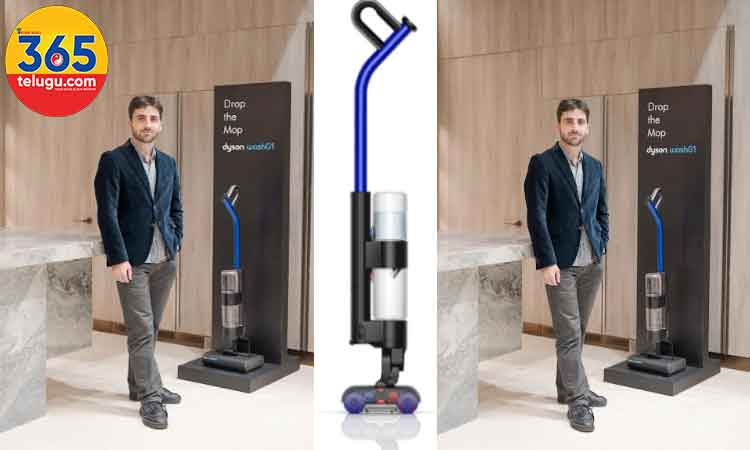365Telugu.com online news,India,June 26th, 2025: Dyson announced the results of its first Global Wet Cleaning Study, to investigate wet cleaning habits and behaviours, frustrations people face with their wet cleaning tools, and why our best intentions might not be delivering the hygienic homes we expect.
The global study uncovers that despite frequent cleaning by Indian households, current tools and habits could be making homes less hygienic, not cleaner. The study finds that hard floors dominate Indian homes, with 94.5% of people having floors made of tiles, stone, or wood–materials that attract dirt easily and require frequent wet cleaning. However, popular cleaning methods including traditional mops, buckets, and cloths, may be spreading dirt rather than removing it.
Indians are obsessed with cleaning: Is that enough?
Unlike South Korea or Australia, where wet cleaning happens more reactively, occasionally or for specific messes, in India, wet cleaning is part of the daily routine. Traditional wet floor cleaning methods remain the most preferred choice for many Indian households, with mops, cloths, or wet sweepers in constant use. Yet, despite their popularity, these tools bring their own set of challenges:

- 1 in 3 Indians say wet cleaning is simply too time-consuming. In fact, 75% spend over an hour on their cleaning routines, with nearly 35 minutes devoted to wet cleaning floors.
- Indian use of mops, brooms, and wet cloths is the highest in APAC—yet only 33% finds cloths or sponges truly effective for hard floors.
- 49% admit they don’t change the cleaning water for every room. This means dirty water, and the germs in it, are spread from one part of the house to another, defeating the purpose of cleaning.
- 45% cite stubborn stains as their top cleaning challenge, and 31% worry about slipping on wet floors. With hard floors so prevalent, this becomes more than a minor grievance.
Seeking Solutions: What Do Indians Want in a Wet Cleaner?
Despite a strong cleaning culture, India ranks lowest in the APAC region in terms of awareness around modern wet cleaning machines. While 62% of Indians believe that vacuum cleaners with wet functionality are the best solution for floor cleaning, adoption remains low.
With the country’s cleaning frustrations exceeding global averages, Indians are clear about what they need:
- Easy maintenance (32%)
- Durable, high-quality build (28%)
- Effortless emptying and cleaning (25%)
- A machine that truly handles tough messes, stains, and spills (23%)
Moreover, common tools like mops and wet cloths struggle to pick up larger or solid debris, often requiring brooming and mopping to be done in separate steps, doubling the cleaning time. For busy urban households, this extended time commitment underscores the need for a more efficient solution that seamlessly combines dry and wet cleaning.

From Smear to Sparkle: How Dyson reinvents the way we clean our floors
Blending decades of expertise in dust and wet science, Dyson introduced the Dyson WashG1™, its first dedicated wet floor cleaner, engineered to deliver a hygienic, barefoot clean. Designed to tackle both wet and dry debris in a single pass, the Dyson WashG1™ combines hydration, absorption, and extraction technologies to pick up spills, stubborn stains, and even hair, while automatically separating debris for more hygienic maintenance.
At its core are two counter-rotating, highly absorbent microfibre rollers that clean on all sides, delivering a faster and more thorough deep clean. The machine removes stains in 30% fewer passes and enables floors to dry up to 80% faster compared to traditional mopping.

